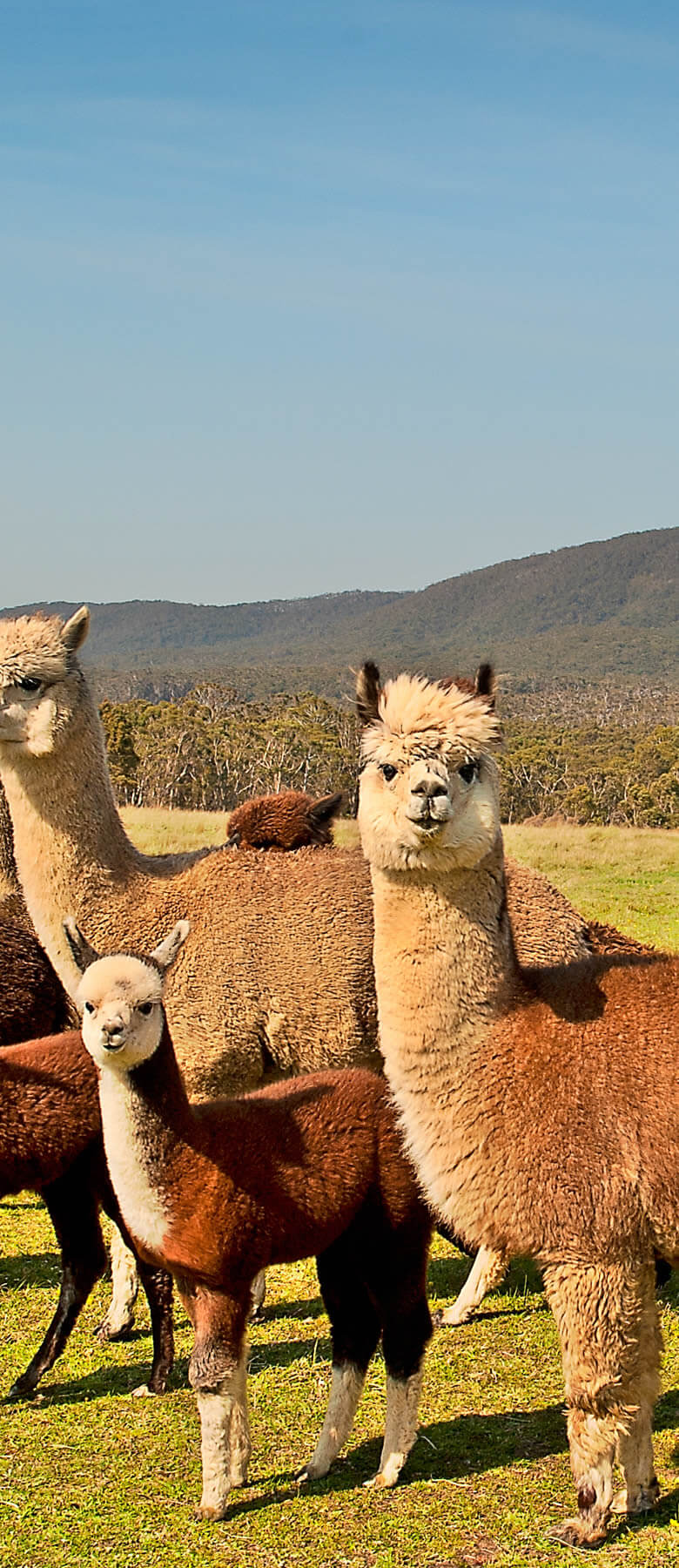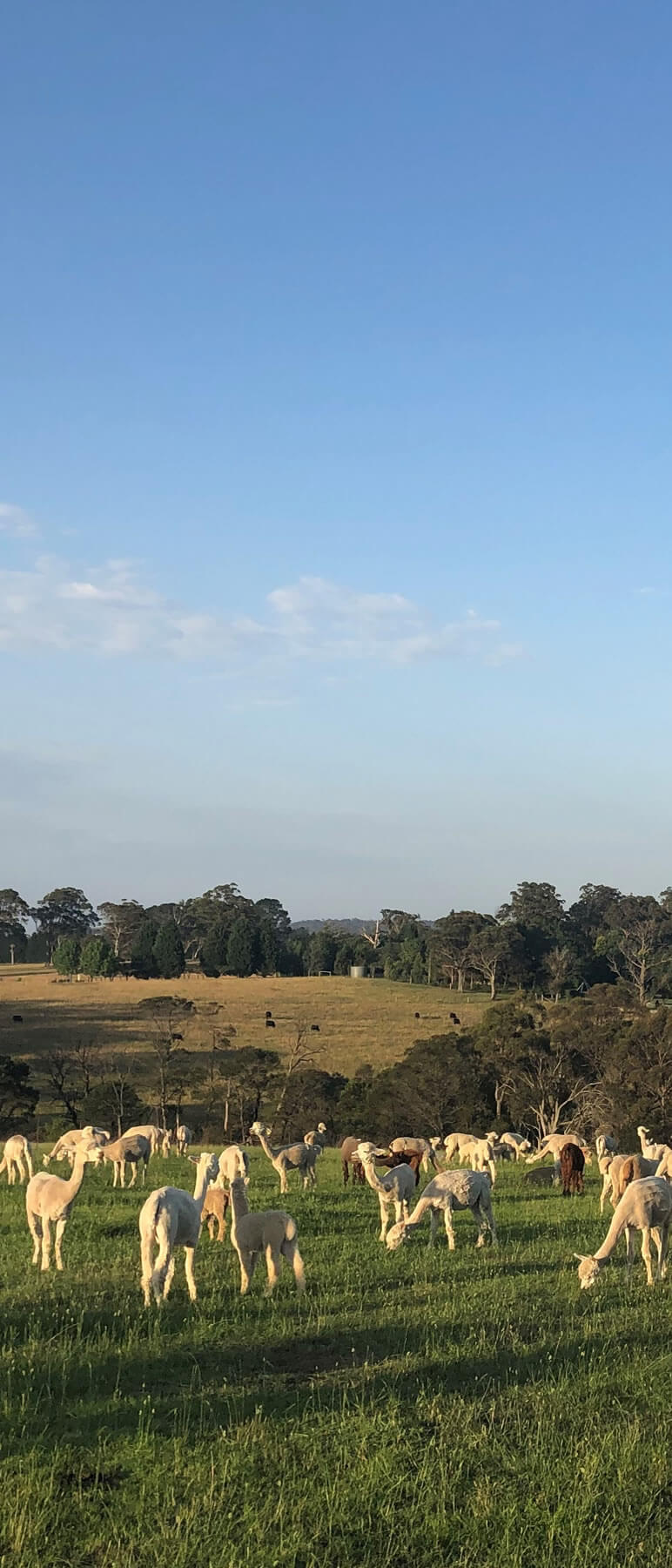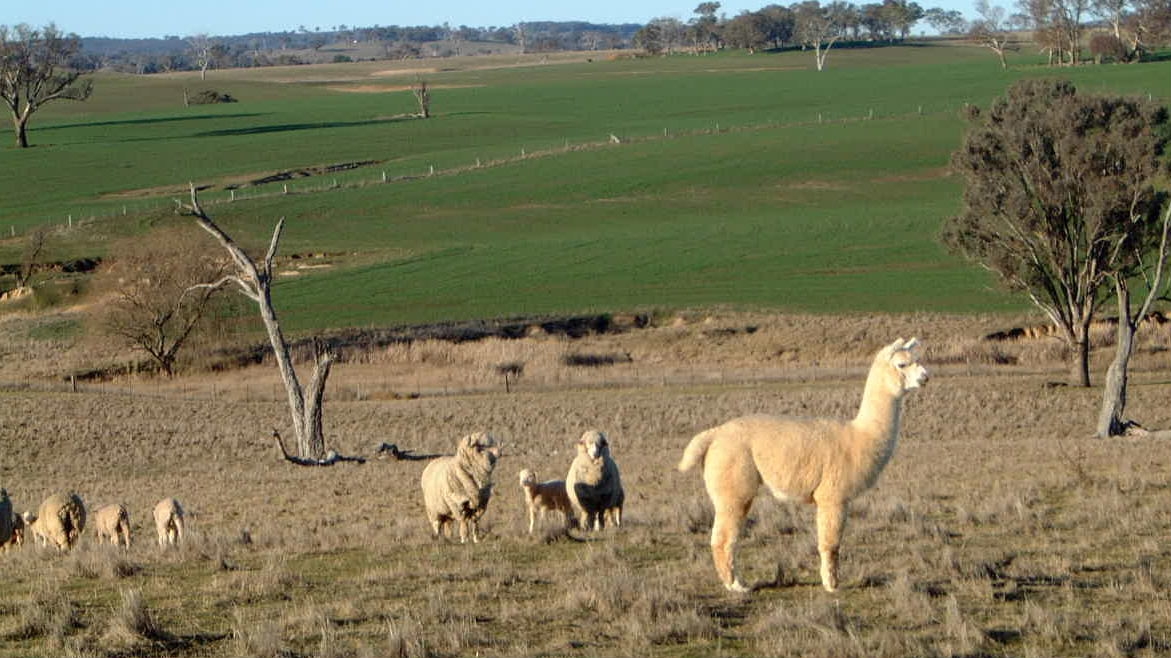Like all camelids, alpacas are hardy, intelligent and gregarious animals that have evolved with strong herd social instincts. Both females and males are very protective of each other and especially of their young. The alpaca is generally very alert to any animal or person approaching its paddock and has excellent eyesight over kilometre distances. While normally almost soundless, the alpaca can emit a piercing alarm scream when aroused to potential danger, alerting their herd and property owners.
Alpacas are normally gentle toward humans and other animals that are not seen as threatening but they have an innate dislike for foxes. However, be aware that they are in just as much danger from wild dogs as sheep. Their defense against such predators is to chase them away or pursue them and if necessary, stamp at or on the predator with their front feet, rising off the ground onto their back legs if necessary before bringing their front legs down with considerable speed and force. Alpacas, when provoked in such a fashion, are very fast and will catch the predator in a short distance. There is also evidence that alpacas may deter attacks from eagles.
Herd guards work best in pairs and should be at least 18 months or older. Two alpacas could easily guard at least 100 ewes or goats but more alpacas may be needed for larger herds. Alpacas are herd animals and having one alpaca is not recommended.
When buying a herd guard it is very important to ensure that the male alpacas are castrated. Male herd guards MUST be castrated as sexually mature males will spend their time fighting each other and will become quite aggressive towards the sheep or goats they are supposed to be protecting. Additionally castrated alpacas are often calmer and easier to handle. Mature female alpacas can be used as herd guards and due to their maternal instinct bond extremely well with the flock.
Herd guards will start protecting as soon as they join your sheep or goat herd but others may take a little time to bond with their new flock particularly if your paddock is large. It is best to give the alpacas 4-6 weeks to get to know the paddock and bond with the flock. However, there are reports of farmers who, after suffering severe losses from foxes, have introduced alpacas to the flock after lambing and kidding have begun, with no additional losses.
The instinct for alpacas to bond with other grazing animal herds, and especially their proven ability to protect sheep and goats, has resulted in the growing use of pairs of wethered adult male or pairs of female alpacas as sheep flock guardians – especially during and after lambing and kidding. Cases have been recorded in Australia of wethers bravely standing in front of females and progeny in the corner of a paddock fending off multiple animal attacks.
Alpacas used as guardians for lambing ewe and breeding goat flocks should be castrated males [wethers] or female at least 18 months old. Entire males are not suitable for use as herd guards.
There is very little risk of fibre cross-contamination as alpacas do not shed their fleeces. Alpacas do not come into physical contact with sheep unless forced to in yards.
Many sheep breeders have reported their best-ever lambing percentages following the introduction of guardian alpacas. Alpaca wethers are readily available at low cost in comparison to their benefits and feeding and husbandry costs are also very low. These quiet and friendly animals are rapidly becoming accepted as essential complements to all sheep and goat breeding enterprises where predators cause lambing and kidding losses.
Alpacas have basic husbandry needs which include the following:
- shearing – once per year
- toenails cut – at least once per year at the time of shearing (white alpacas may need their nails cut twice per year as their nails grow quicker than darker nails)
- drenching (worming) – in line with the drenching program of your flock
- vaccinations – with a 5 in 1 in line with the vaccination program of your flock and at least once per year
- Vitamin A, D and E – should be given at least once per year at the time of shearing but should also be given to darker alpacas at the beginning of winter


